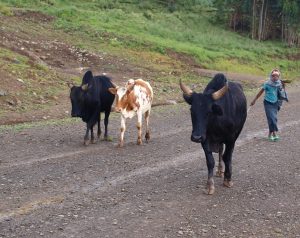ESSP Research Note 65: by Asfaw Negassa, Fantu Bachewe, Alemayehu Seyoum Taffesse, and Mekdim Dereje. Synopsis of Working Paper 101.
Abstract: The livestock sub-sector has contributed little to the remarkable economic growth recorded in Ethiopia in the last decade. In an effort to stimulate livestock production, the Ethiopian government has recently recognized livestock as an important strategic sub-sector in which to invest. Unlike most studies that focus purely on aspects of livestock production, this study provides a detailed descriptive assessment of the livestock production and marketing behavior of smallholder mixed crop-livestock farmers.
The study uses data from the Agricultural Growth Program baseline survey of farm households in districts of Ethiopia with high potential in grain crops production, areas which have a significant share of the livestock in the country. Smallholder livestock production is characterized by low levels of livestock ownership, limited market orientation, and low productivity. These characteristics restrict the capacity of these livestock systems from taking advantage of emerging opportunities in both domestic and export livestock markets. We find a high degree of heterogeneity in access to livestock assets, production practices, marketing, and livelihood strategies among the farm households studied. Hence, a single policy recommendation might not work for all farmers.
Our assessment apprises the current status of livestock production systems in Ethiopia and highlights potential income sources from livestock, including positive synergies between these income sources to help reduce poverty and to promote economic growth in rural communities. Download the PDF.
